England's archaeological history gathers dust as museums fill up
- Published
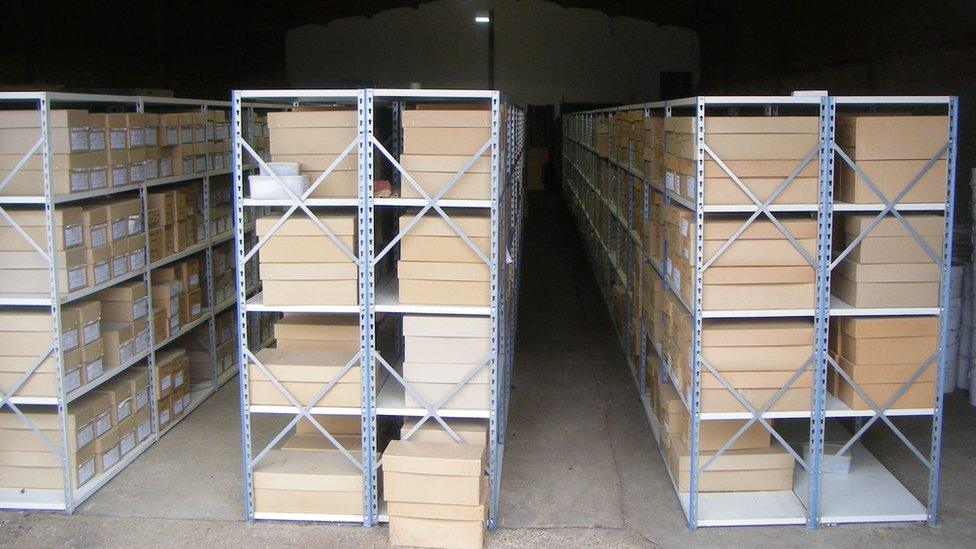
A store of archaeological finds that cannot be placed in museums
Troves of ancient artefacts unearthed during building and infrastructure works are gathering dust in warehouses as England's museums run out of space, the BBC has learned.
Archaeologists say this is a missed opportunity for people to learn about their history and heritage.
The objects range from fine Roman metalwork to bronze age pottery.
They are discovered by archaeological contractors whom developers hire before clearing sites for construction.
Many of our most important historical discoveries now come from such contractors, known as 'commercial archaeologists'.
London's largest mosaic find in 50 years was unearthed during a regeneration project near the Shard in Southwark and archaeologists working on the route of the HS2 high-speed railway found a vast wealthy Roman trading settlement.
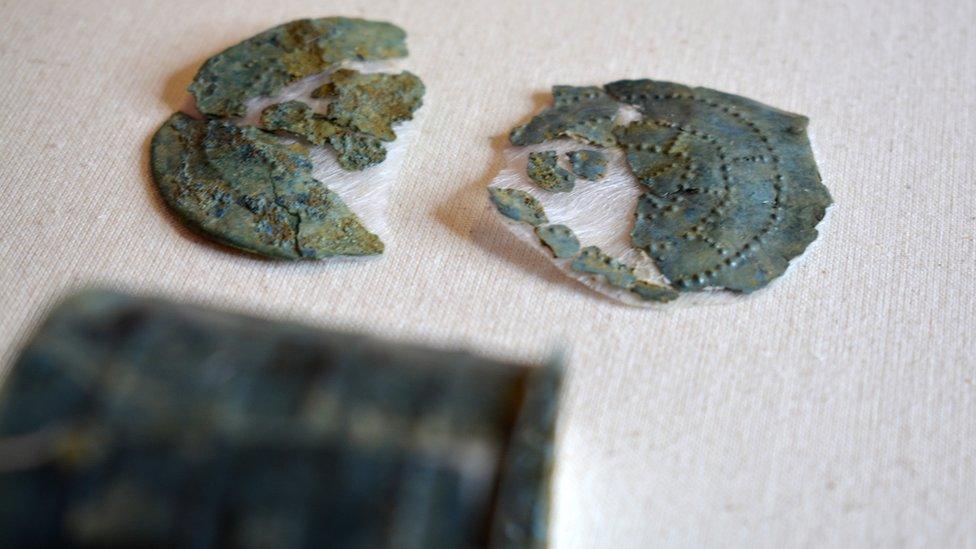
The ends of a rare Saxon metal workbox, laid flat
But Historic England says that museums could soon run out of room for such artefacts. A report commissioned by the public body and Arts Council England shows that unless they acquire more storage space, the amount of material coming out of the ground will soon be greater than the space available to store it.
"The clock is ticking - we have four or five years before we really do start seeing massive problems," said Barney Sloane, national specialist services director at Historic England.
"The potential of archaeological archives is really rich," he said. "It would be a massive shame if we couldn't find a way of making sure they are protected for the future."
While the management of archaeological finds differs between Scotland, Wales and Northern Ireland, all three countries have also reported similar problems with storage.
Many museums have already stopped collecting archaeological archives. This means that they remain out of sight of the public, although many contractors provide access to researchers who want to study them.

Amethyst beads for a necklace from the grave of a high status Saxon girl
"There's literally nowhere to put them," said Tom Booth, a researcher at the Crick Institute who works with museums to access samples for research. He added that a lack of dedicated archaeological curators, due to funding, added to the problem.
"If there's not an archaeological curator at a museum, they might not be as keen to take it on because they don't feel they could look after [the finds] properly," he said.
Fewer than half of museums in England now have an archaeological curator, according to the Society of Museum Archaeologists.
Already, at least a quarter of the excavations undertaken by archaeological contractors in England produce collections that never find their way to a museum, according to Historic England and Arts Council England.
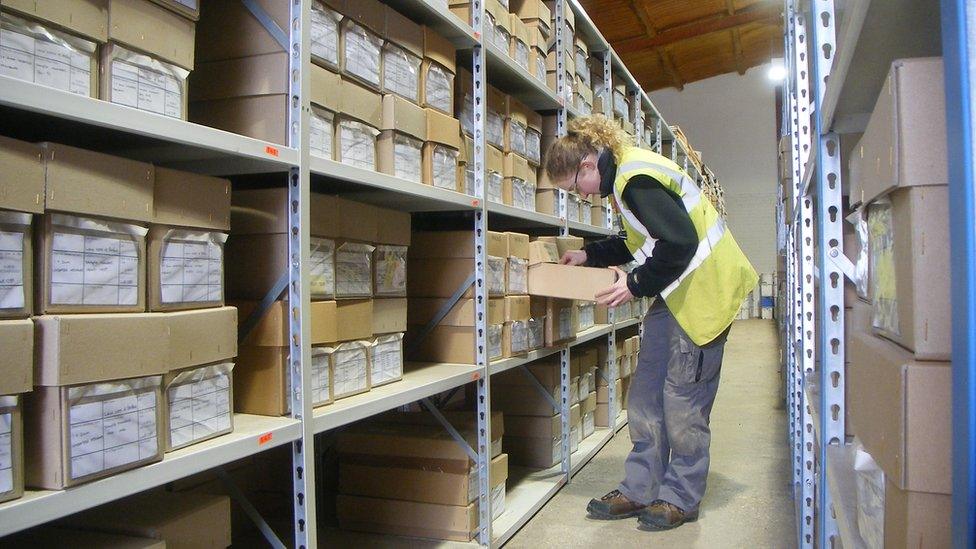
The external store of commercial firm Albion Archaeology, where finds that can't be placed in museums are kept
That means contractors are left holding the bag when it comes to storing them, but are ill-equipped to show what they have found to the public, even though some do try to make objects available to local communities.
"We have a small visitor centre at our office where people can come and view some of the archival material," said Victoria Sands of The Colchester Archaeology Trust, a charity which also does contract work and discovered the site of a Roman circus. "But obviously we're not a museum, it's not on permanent display or anything like that."
Historic England, along with Arts Council England and National Trust, are in early talks to advise government on the creation of a national archive that they say could solve the issue of storage for the next 100 years. It remains to be seen whether government will commit funding to that solution.
Historic England say they are concerned that if storage space runs out, councils may no longer be able to compel developers to excavate sites of archaeological interest, meaning a lot of history could be lost forever.
One novel solution to the storage problem has been to put finds back where they came - underground.
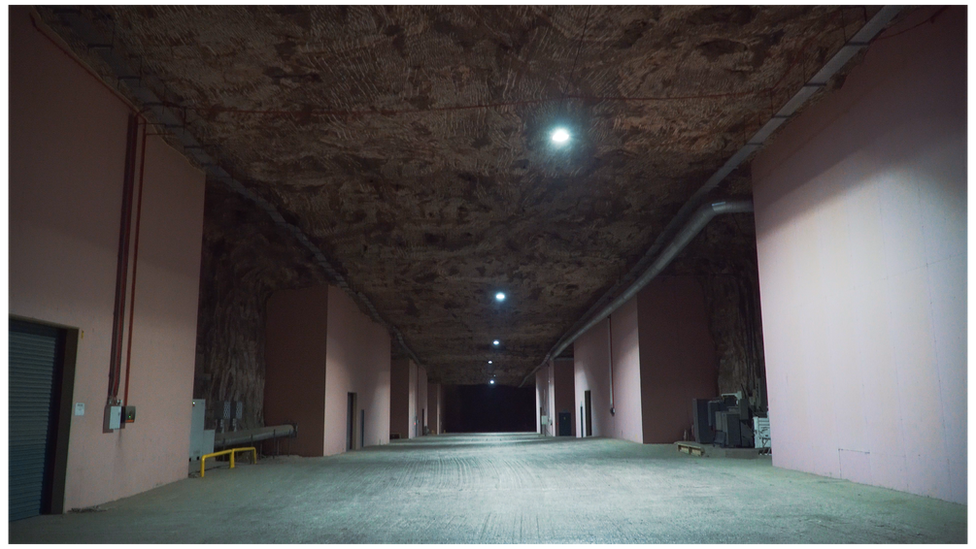
The interior of Deepstore, a former salt mine in Cheshire where Cambridgeshire County Council store finds made in the county
Cambridgeshire County Council has turned to Deepstore, an underground storage company located in a former salt mine in Cheshire, which gives them boundless space to keep their 20,000 boxes of historical artefacts, which they can recall as needed.
A project called After the Plague, external run by the University of Cambridge has requested hundreds of boxes of human remains from their collection at Deepstore that came from burials at the Hospital of St. John in Cambridge.
That project used cutting-edge techniques to learn more about the consequences of the Black Death in Cambridge, including how epidemic diseases affect our evolution, and found the first direct archaeological evidence of the plague in Britain.
"That benefits medicine, it benefits genetics - it's not just about heritage," said Mr Sloane of Historic England.
Finds from the stores can also be loaned out to museums for temporary exhibitions, like the current showing of goods from two graves at the burial site of a possible Saxon princess on display at Ely museum. That exhibition uses finds from the collection of Cambridgeshire County Council, including an ancient brooch and amethyst beads from a necklace.
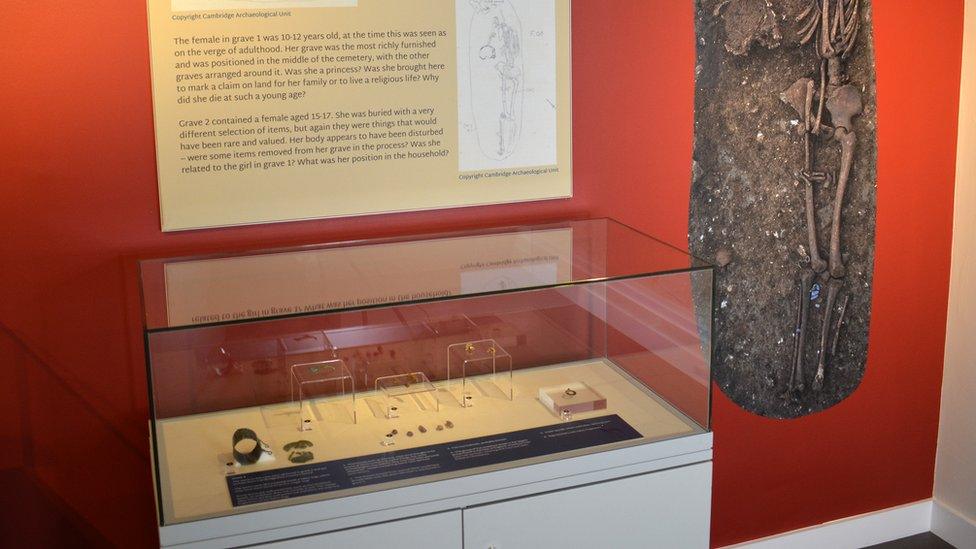
The exhibition at Ely museum, showing some of the grave goods of two 7th century Saxon girls
"The whole point of storing this material is to tell stories about it and to show it to people and make them aware of their own history," said Sally Croft, archives manager for Cambridgeshire County Council. "And you can only do that by putting it on display and allowing people to see it."